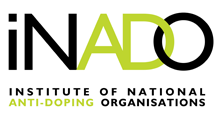The Respondent, Amber Neben is a professional cyclist and a member of the T-Mobile Women’s Cycling Team, a trade team owned by USA Cycling and sanctioned by the international federation for the sport of cycling, Union Cycliste International (UCI).
The Respondent is subject to testing by USADA and UCI. On May 31, 2003, during the Coupe du Monde Montreal, Respondent provided a urine sample at the request of UCI. On June 4, 2003, the laboratory screening test performed from the A sample indicated the presence of an anabolic steroid. The A confirmation test was performed on June 30, 2003, and it revealed the presence of 19-norandrosterone. On July 14, 2003, the laboratory tested the B sample positive for 19-norandrosterone.
The North American Court of Arbitration for Sport Panel decides as follows:
- A doping violation occurred on the part of Respondent. The Panel finds that this was not an intentional case of a doping violation.
- The minimum suspension from all competition for a first offender of two (2) years to take place effective from July 13, 2003 is imposed on Respondent pursuant to UCI Regulations.
- Respondent is prohibited from participating in any capacity whatsoever in any events sponsored by UCI during the 6-month period of time from July 13, 2003.
- Prior to the end of the 6-month period, Respondent will meet with her fellow T-Mobile team members and the athletic staff of USA Cycling and discuss with them the USADA and IOC warning on the possible contamination of dietary supplements, including vitamins and minerals. In addition, Respondent will meet at least once with the other licensed elite cyclists of USA Cycling, along with the athletic staff of USA Cycling, to also discuss with them the above USADA and IOC information. She will confirm in writing to USADA that she has completed these conditions of her probation.
- During the term of her full probation, Respondent will submit to urine drug testing at her expense on a monthly basis by an IOC accredited laboratory. If Respondent tests positive during any of this time, her probation will be revoked, any and all competition results will be cancelled in compliance with UCI Regulations, and she will serve the remainder of the two-year suspension, commencing from the time of another positive test result.
- All competitive results which occurred on or after May 31, 2003, are cancelled.
